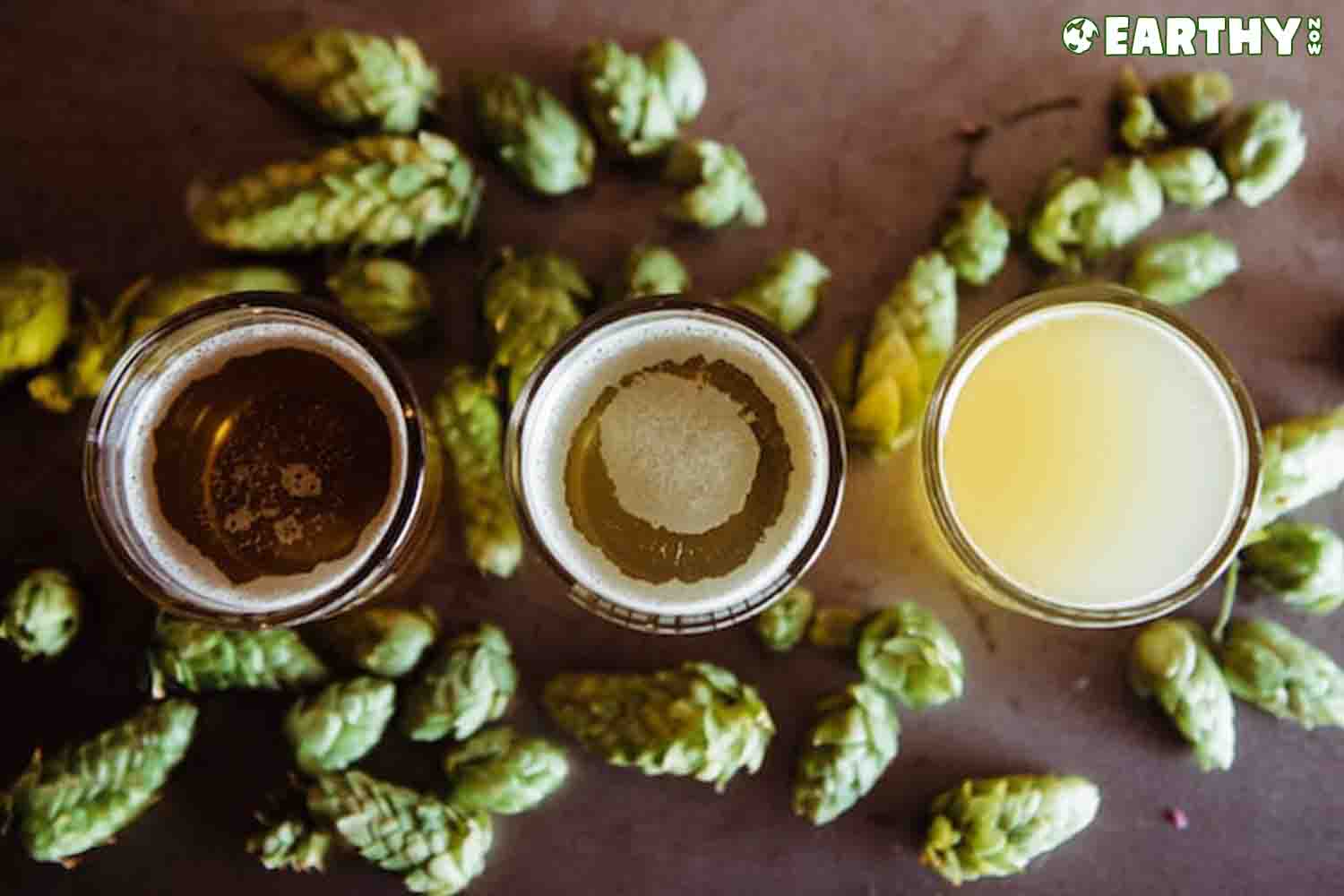Drink in the alpha-humulene. Walk into a craft brewery and you’ll likely be hit with the earthy, pungent smell of hops. That smell comes primarily from the terpene alpha-humulene. Also known as alpha-caryophyllene, alpha-humulene is a ring-opened isomer of β-caryophyllene, but unlike its cousin, it lacks the ability to initiate CB2 activity in the endocannabinoid system.
This means that alpha-humulene is not received by cannabinoid receptors in the same way as compounds such as beta-caryophyllene, CBD, THC, and other cannabinoids [1]. Nonetheless, alpha-humulene can affect how a person experiences cannabis through the entourage effect.
First found in the essential oils of humulus lupulus (or common hops), alpha-humulene is what gives beer its characteristic bitter flavor and “hoppy” taste. Depending on additional terpenes in a given strain, it can also give cannabis a beer-like scent.
What are terpenes?
In essence, terpenes are molecules responsible for determining a plant’s smell. Additionally, they serve the plant by giving off scents that protect it from predators and help it attract pollinators. Particularly repellent smells, for instance, might act as insect repellents, thereby keeping a plant safe from being eaten. On the other hand, terpenes play a vital role in luring helpful insects to flowers to ensure the plant’s survival through pollination [2].
When you smell a flower or open a bottle of essential oil, you’re inhaling the aromatic natural compounds of the plant into your olfactory neurons. In other words, you’re smelling terpenes. Likewise, the terpene profiles of various cannabis strains determine their distinctive smells and tastes. Additionally, terpenes have the potential to offer benefits that alter the overall experience of the cannabis plant as terpenes work alongside cannabinoids to amplify the effects while at the same time offering benefits.
What is alpha-humulene?
Formerly classified as α-caryophyllene, alpha-humulene is a sesquiterpene given its name from Humulus lupulus, a.k.a. the hops plant. Both the hops plant and cannabis plants reside in the taxonomic family Cannabaceae. Alpha-humulene plays a major role in endowing the same aromatic notes to both cannabis strain and plants [3].
The two compounds differ a humulene in structure but share the same chemical formula as its close relative, beta-caryophyllene. Plants such as basil, sage, and clove contain α-humulene and high concentrations of β-caryophyllene, giving them similar aromas to hops [3].
Alpha-humulene terpene effects
Scientific studies are needed to determine its efficacy in other mainstream medicinal contexts.
In aromatherapy, a similarly related product, hops essential oil, is used [5].
Commercial uses for alpha-humulene
Alpha-humulene can be found in foods, beverages, cosmetics, cleaners, and insecticides. Its clove-like, hoppy scent elicits a “watery” note to products scented or flavored with it. One of the few naturally occurring materials that offer this oceanic quality, alpha-humulene lends itself well to certain products like chewing gum or shampoos [6].
Cannabis strains high in alpha-humulene
Cannabis strains high in alpha-humulene tend to be from Sativa strains. Super Sour Space Candy, Cherry Soda, Hawaiian Haze, and Lifter are a few popular strains that boast a high percentage. The top 20 cannabis-derived terpenes all contribute to strains’ various recognizable profiles.
Non-cannabis sources of alpha-humulene
Hops and cannabis are the two plants where alpha-humulene appears in high concentrations. These plants are closely related because both belong to the Cannabaceae taxonomic designation.
Other sources of alpha-humulene include:
- Abies balsamea essential oil
- Pine trees
- Basil
- Ginger
- Cloves
- Black pepper
- Ginseng
- Vietnamese coriander
Entourage effect
When it comes to the effects of alpha-humulene and other terpenes, there is some evidence to indicate that they may play a powerful role in the endocannabinoid system (ECS) by influencing the entourage effect. The entourage effect was first coined by Mechoulam and Ben-Shabat in their 1998 hypothesis that other organic compounds work in combination with the primary endogenous cannabinoids in cannabis to create a synergistic effect. This may indicate that other terpenes when taken with other cannabis compounds such as THC or CBD may affect the body differently than terpene isolates or cannabis products that are not full-spectrum [7].
An example of the potential benefits of further research on how terpenes in cannabis may contribute to the entourage effect can be in further studies found in a recent study in Science Daily [8].
Take the alpha-humulene terpene test
Alpha-humulene appears to be one of the most prominent of terpenes present in cannabis and can potentially initiate benefits through the entourage effect. Yet, the best way to see if this terpene will rise to the top as one of your personal favorites is to try a product with a strain that contains higher concentrations of it. If you love the smell and taste of craft beer, there’s a good chance you will enjoy the aroma of alpha-humulene.
Medical Disclaimer / Legal Disclaimer – Information is provided for educational purposes. It does not, and is not intended to, constitute legal advice or medical advice. We attempt to be accurate and up to date but the legality of cannabinoids and the science of cannabis is evolving. The author is neither a legal professional nor a medical expert. Before buying or using any products, you should check with your local authorities and medical providers.
References
- Finest Labs: Humulene Terpene
- Wikipedia: Terpene
- Science Direct: Humulene
- Leafwell: Humulene
- Lotus Garden Botanicals
- Humulene Suppliers
- Wikipedia: The Entourage Effect
- Studies Show Cannabis Terpenes to Provide Pain Relief
- Preventative and Therapeutic Properties of Humulene
- Anti-Inflammatory Effects of Humulene






